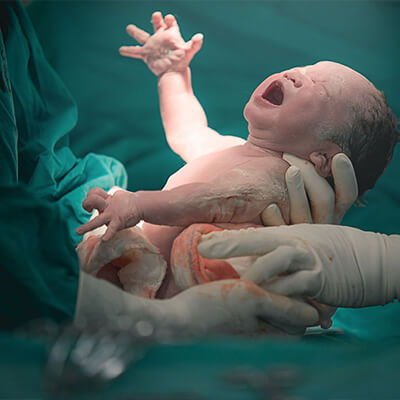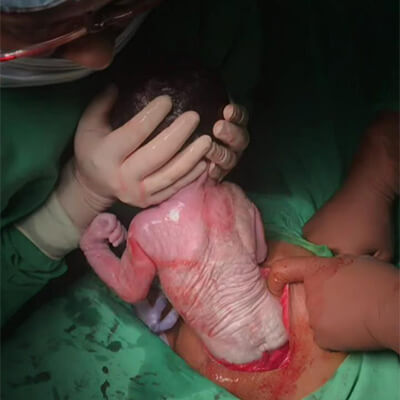OBSTETRICS

NORMAL PREGNANCY
A normal, uncomplicated pregnancy is the dream of all women. Duration of a normal pregnancy is 9 months and 7 days or 40 weeks.
Routine blood tests like haemoglobin level, blood sugar level, blood grouping, thyroid profile are a must. Special blood tests like TORCH test to look for certain viral infections, haemoglobin electrophoresis to rule out any haemoglobin defects, serology to rule out infection by Hepatitis or HIV virus, VDRL test to rule out Syphilis, Triple test to diagnose Down’s Syndrome is part of the primary investigations in pregnancy.
Ultrasonography is done in pregnancy to confirm wellbeing of baby, to rule out any major developmental abnormalities, and to assess proper growth and maturity of baby.
Regular monthly visits to the Obstetrician is necessary to monitor weight gain, BP, baby’s growth, heart rate, discuss problems and prescribing medicines.
Mode of delivery is usually by Vaginal delivery.
HIGH RISK PREGNANCY
It is a pregnancy with any complicating factors.
Maternal factors may be high blood pressure, high blood sugar, anaemia, increased age of more than 35 years, mode of conception like IVF (Test Tube baby), premature leaking, premature labour, maternal disease like heart or kidney disease.
Fetal factors may be growth restricted baby, congenital malformations, twin pregnancy
A normal uncomplicated pregnancy can turn into a high risk pregnancy during any time in the 9 months of pregnancy, thus regular check up is mandatory to try to prevent and for early diagnosis of a high risk pregnancy
Timing of delivery and mode of delivery differs from patient to patient.
Delivery should be done in a set up equipped to deal with any maternal or fetal problem. The hospital should be a Multispeciality Hospital with all disciplines. It should have a proper adult ICU and a proper NICU to deal with all critical problems of both mother and baby.
It is always advisable to shift the mother to a proper setup with the baby inside the uterus where it is most safe, rather than deliver the baby and then shift the newborn.


NORMAL DELIVERY / VAGINAL DELIVERY
It is the physiological mode of delivery in normal, uncomplicated pregnancy.
Pros of normal delivery-
- No surgical scar in the abdomen, but there is usually stitches at the mouth of the vagina
- Mother has less pain after delivery and can resume normal activities early
- Satisfying to the mother, feels like a lifetime achievement
Cons of normal delivery-
- Normal delivery is painful and pain lasts for the entire duration of labour (which may be 8 -10 hours in the first delivery)
- Timing cannot be predicted , thus an emergency situation may arise
- There is no guarantee of having a vaginal delivery, may require a ceserean section at any time during labour due to problems in mother or baby.
PAINLESS LABOUR
A modern method of delivery with minimal pain.
Normal delivery occuring without the associated labour pain for most of the time.
Done by giving epidural anaesthesia to the mother during labour.
Anaesthesia is stopped when baby’s head is visible and it is time to “push”.


CEASEREAN SECTION
It is done in cases of high risk pregnancy, in cases where normal delivery cannot be attempted due to some problems of baby or mother
As a wilful choice by the mother to avoid pain or have an auspicious astrological birth time of baby
Done by giving spinal anaesthesia.
Mother can enjoy the moment of birth.
Pain lasts for few days to weeks after surgery and some restriction of activity is needed for a few weeks. No difficulty in taking care of the baby or breastfeeding.
CHAMBERS
-
KKM LAP LASER SURGICAL CENTER, KOLKATA
Nandan Kanan, Ward Number 109, Opposite Metro Cash & Carry, Beside SBI Branch, Kolkata - 700099
-
KKM CLINIC, BARDHAMAN
The Arogya,
Opposite Bardhaman Nursing Home 168, R C Das Road, Bardhaman

